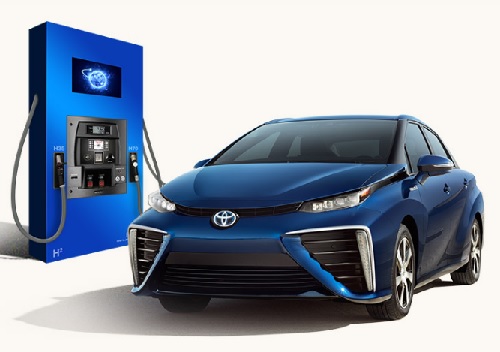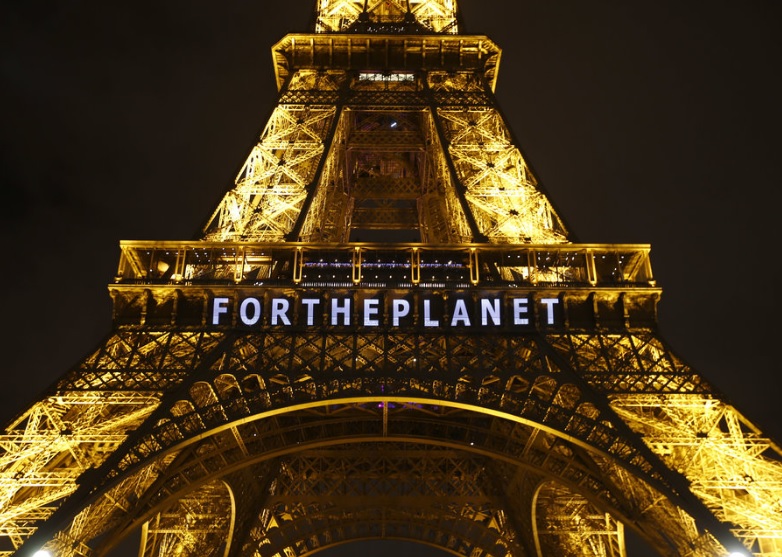What’s been happening lately?
Hydrogen is looking better in costs now for fueling clean vehicles and in a few other areas including industrial feedstock and as an energy storage medium. That comes from a new study by Hydrogen Council and McKinsey &  Co., that concludes there are now three core market drivers: a steep drop in production costs, higher load utilization cutting distribution and refueling costs, and additional cost drops from scaling up of end-use equipment manufacturing. The study looked at 25,000 data points gathered and analyzed from 30 global companies with cost reductions expected across several different hydrogen applications. These sectors include long-distance and heavy-duty transportation, industrial heating, heavy industry feedstock, and others, which make up about 15 percent of global energy consumption. Of course, much support is needed and Hydrogen Council is championing effective government policies to be adopted in key geographies, along with investment support of around $70 billion in the lead up to 2030 in order to scale up and produce for a much more cost-competitive fuel. “The Hydrogen Council believes that the report’s findings will not only increase public awareness about the potential of hydrogen to power everyday lives, but also debunk the myth that a hydrogen economy is unattainable due to cost,” said Euisun Chung, executive vice chairman of Hyundai Motor Group and co-chair of the Hydrogen Council. “If we are to reach our global climate goals by mid-century and reap the benefits of hydrogen, now is the time to act.”
Co., that concludes there are now three core market drivers: a steep drop in production costs, higher load utilization cutting distribution and refueling costs, and additional cost drops from scaling up of end-use equipment manufacturing. The study looked at 25,000 data points gathered and analyzed from 30 global companies with cost reductions expected across several different hydrogen applications. These sectors include long-distance and heavy-duty transportation, industrial heating, heavy industry feedstock, and others, which make up about 15 percent of global energy consumption. Of course, much support is needed and Hydrogen Council is championing effective government policies to be adopted in key geographies, along with investment support of around $70 billion in the lead up to 2030 in order to scale up and produce for a much more cost-competitive fuel. “The Hydrogen Council believes that the report’s findings will not only increase public awareness about the potential of hydrogen to power everyday lives, but also debunk the myth that a hydrogen economy is unattainable due to cost,” said Euisun Chung, executive vice chairman of Hyundai Motor Group and co-chair of the Hydrogen Council. “If we are to reach our global climate goals by mid-century and reap the benefits of hydrogen, now is the time to act.”
New Jersey wants to take on greenhouse gases through a new transportation policy. Gov. Phil Murphy just signed an electric vehicle bill into law that offers a clear roadmap for state houses and governors nationwide to tackle climate change. The new law makes it easier for residents of New Jersey to buy an EV by providing a largest-in-the-nation rebate of up to $5,000. It also creates a statewide high-speed charging network, making driving an EV more convenient. Beyond cars, the law also requires NJ Transit to only purchase electric buses by 2032.
Cruise, General Motors’ self-driving vehicle division, has announced the Cruise Origin, developed with Honda Motor Co. It’s been designed with more space for passengers and to take on mobility competitors. The autonomous taxi will give ride-hailing giants Uber and Lyft another rival, Cruise CEO Dan Ammann said Tuesday during the vehicle’s introduction. GM is putting all its AV efforts into the Cruise unit these days, and giving the business space to work with competitors like Honda, which became an investor in October 2018. That’s helped Cruise move more quickly to develop a self-driving electric vehicle platform. GM created the platform that doesn’t require a backup driver or steering wheel. Honda contributed to the engineering and production of the vehicle. GM is waiting for an exemption from the Federal Motor Vehicle safety standards that would allow Cruise to test vehicles without these manual controls. If that gets approved, GM can deploy up to 2,500 robs-taxis a year that can be hailed vis a smartphone app.
And a few other new briefs:
- President Trump said that Elon Musk is “one of our great geniuses, and we have to protect our genius.”
- Tesla Autopilot crashes put in a more realistic overview perspective by a mobility expert.
- The latest on the AB 5 battle, California’s law requiring gig-economy workers to be treated as employees.

 Reactions to Trump on Paris climate accord: Cities, states, and major corporations are staying committed to backing the Paris climate change agreement after President Donald Trump said yesterday that the U.S. will be leaving it. Tesla CEO Elon Musk is stepping down from Trump’s economic advisory panel over it, while Apple, Google, Twitter, Amazon, Facebook, Microsoft, IBM, and other companies have issued statements that climate change is an urgent threat that requires a global effort to combat. As of yesterday, an unnamed group that includes 30 mayors, three governors, more than 80 university presidents, and more than 100 businesses, has gone directly to the U.N. to back the Paris climate accord.
Reactions to Trump on Paris climate accord: Cities, states, and major corporations are staying committed to backing the Paris climate change agreement after President Donald Trump said yesterday that the U.S. will be leaving it. Tesla CEO Elon Musk is stepping down from Trump’s economic advisory panel over it, while Apple, Google, Twitter, Amazon, Facebook, Microsoft, IBM, and other companies have issued statements that climate change is an urgent threat that requires a global effort to combat. As of yesterday, an unnamed group that includes 30 mayors, three governors, more than 80 university presidents, and more than 100 businesses, has gone directly to the U.N. to back the Paris climate accord.